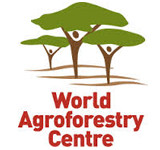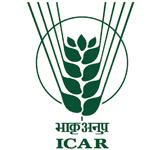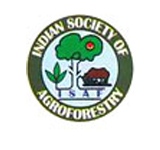
Vigyan Bhavan & Kempinski Ambience
10 - 14 February 2014
Delhi, India
blog

Coffee agroforestry system in Sierra de las Minas, Guatemala. Trees shade can be measured with MAESTRA, a light-interception model. Photo via Jonathan Cornelius/ICRAF
Kira Borden held the audience spellbound at the World Congress on Agroforestry 2014 as she described how radar can be used to map the roots of trees. Showing a slide of a team with picks and shovels bent double next to a tree, the University of Toronto PhD student said that using “ground penetrating radar (GPR) is easier than digging to find its roots”, up to now the conventional method.
“We can now conduct non-intrusive below-ground studies. Roots contain more water than dry soil and reflect back the radar beams, which create two dimension vertical profiles.” Knowledge of roots is particularly important in determining below-ground carbon; roots contain 20-40% of total tree biomass.
Borden was speaking on 12 February in the ‘New tools and paradigms’ session of the third ever global gathering on agroforestry. Chaired by ICRAF’s Tor Vagen, himself the developer of a method to map soil carbon and link it with remote sensing (see ICRAF Geoportal), the session profiled six innovations.
Fabien Charbonnier spoke about how to measure shade, a key issue in agroforestry systems as they strive to find optimal spatial arrangements and densities of trees. Reporting on MAESTRA, a three dimensional light interception model, he said that light “could now be assessed as a continuous variable.” Applying MAESTRA to coffee fields in Central America, he found that the effect of shade trees, Erythrina poeppigiana, was larger than the crown projection.
Staying in Central America, Bruno Rapidel reported on what happened when CAF2007, a numerical model for shade coffee systems, was combined with a participatory approach which involved farmers in designing agroforestry systems with multiple requirements and the interactions of several tree species.
“We interviewed 600 smallholder farmers producing premium coffee on small plots in an area of high erosion due to sleep slopes,” said Charbonnier. “The erosion is a threat to a new hydroelectric dam. So we wanted to know how many trees farmers needed to maximize production of coffee and payments for ecosystem services – received for reducing erosion. Involving farmers in the CAF2007 model helped us to explore a system that the farmers would accept and put in place.”
In a similar vein, Claude Garcia from ETH Zurich, spoke about using on-line role playing to understand farmers’ choices in the mountains of the Western Ghats in India. “Wicked problems are those with multiple stakeholders and many uncertainties. The answer is often processes rather than solutions.”
A wicked problem in the Western Ghats is the trend for farmers to remove of native trees and replace them with full sun coffee, a change which damages the ecosystem services, mainly water, delivered by the tree clad hills. Garcia’s on-line game, played by the farmers, gave them information on the coffee yields and the livelihood and biodiversity levels that resulted from their decisions. “We were able to generate a library of strategies and to create a decision tree.”
Finally, describing a non-technical approach, Clement Chenost of Moringa Fund spoke of agroforestry as an innovation in itself, which is still new to the private sector. Moringa Fund, the world’s first investment vehicle dedicated to agroforestry, currently has eight investors which have put in a total of EUR50 million. Chenost said agroforestry is highly profitable in the long run – producing timber, biomass, cash crops, carbon money and more, and that social risk could be lowered by well-designed out grower schemes. However, it was a mark of how complex investors find agroforestry that it took three years for Moringa to raise this sum.
“Industry is specialized, segmented, dominated by monoculture and in need of consciousness changing,” said the investment fund manager. “And agroforestry is complex with several species and markets and hundreds of thousands of smallholders. We need to communicate that this complexity can be managed.” Moringa Fund is advised by research organizations ICRAF, CIRAD and IRD.
By Cathy Watson
Head of Programme Development
World Agroforestry Centre (ICRAF)
—
Follow the Congress on Twitter #WCA2014 for live updates!





